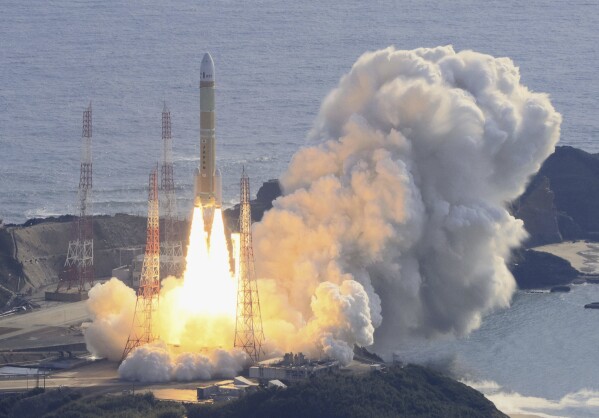[ad_1]
TOKYO (AP) — A Japanese flagship H3 rocket lifted off from a space station in southwestern Japan on Saturday, successfully reaching its planned trajectory and releasing one of two payloads in a crucial second test, a Overcame its failed launch a year ago and regained hope. So that the country remains competitive in the global space race.
The H3 rocket lifted off from the launch pad at Tanegashima Space Center on Saturday morning, two days after its originally scheduled launch, which was delayed due to bad weather.
The Japan Aerospace Exploration Agency, or JAXA, said the rocket’s initial flight went smoothly as planned and it successfully released the first of two small payloads. JAXA will hold a news conference later in the day to provide more details. Officials are confirming the position of the second satellite.
JAXA says the primary goal of the second test flight is to put the rocket into the intended trajectory. The agency also plans to place two observation micro satellites in orbit.
Saturday’s success is a boost for Japan’s space program after recent successes, including a historic precision landing of an unmanned spacecraft last month.
The launch is being closely watched as a test of Japan’s space development after the H3 failed in its maiden flight last March. JAXA and its prime contractor Mitsubishi Heavy Industries are developing the H3 as a successor to their current mainstay, the H-2A, which is set to be retired after two more flights.
Members of the H3 project team were under immense pressure to get the rocket back to flight. The H3 No. 2 rocket was decorated with thousands of stickers with encouraging messages sent by well-wishers from across the country.
As the rocket lifted off and reached its trajectory and successfully released its first payload, project members at the JAXA Command Center cheered and hugged each other in livestreamed footage. NHK television said some staff at a press center were seen crying with relief and joy.
On its maiden flight last March, the rocket was destroyed along with its payload, the Advanced Land Observation Satellite, or ALOS-3, causing disappointment and uncertainty about Japan’s space exploration plans.
JAXA and MHI have since identified and mitigated potential electrical issues that led to the failure to ignite the H3 rocket’s second stage engine, and conducted careful rehearsals for the upcoming second test flight. To be safe, this time the rocket carried a mockup of the ALOS satellite, called VEP-4, which is not designed for release.
The H3 is designed to carry larger payloads than the H-2A at a much lower cost to be globally competitive.
Expectations were high after recent successes. JAXA last month made the world’s first “pinpoint” moon landing and captured lunar data by the unmanned spacecraft SLIM, which was launched aboard an H-2A rocket, the 48th H-2A rocket to launch a spy satellite into its planned orbit. After a few days of successfully installing.
[ad_2]
Source link
